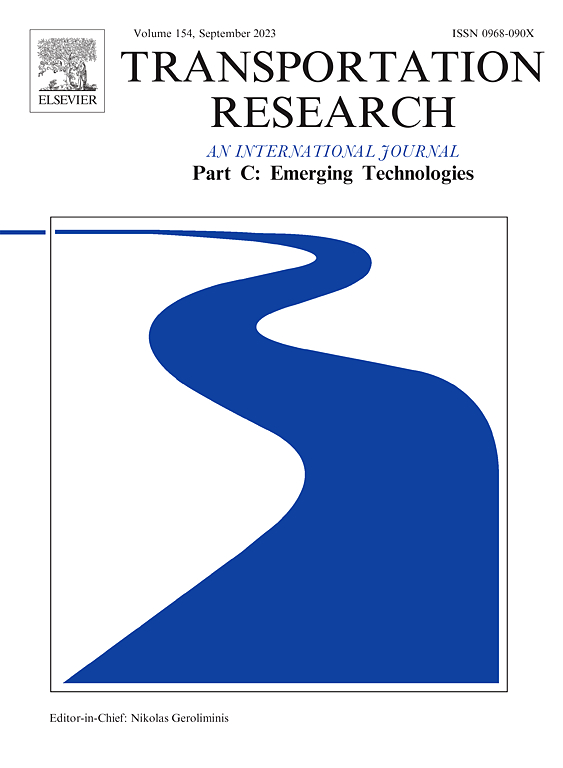Robust lane change decision for autonomous vehicles in mixed traffic: A safety-aware multi-agent adversarial reinforcement learning approach
IF 7.6
1区 工程技术
Q1 TRANSPORTATION SCIENCE & TECHNOLOGY
Transportation Research Part C-Emerging Technologies
Pub Date : 2025-02-05
DOI:10.1016/j.trc.2025.105005
引用次数: 0
Abstract
As autonomous driving technology advances, scenarios where autonomous vehicles coexist with human-driven vehicles will become increasingly common. However, existing lane-changing decision models often overlook the vulnerability to adversarial attacks and the complexity of traffic scenarios, leading to the risk of erroneous decisions in mixed traffic flows, which could result in catastrophic consequences. To address these issues, this paper proposes a novel dual-layer lane-changing decision-making algorithm to enhance the safety and reliability of autonomous vehicles in complex environments. The upper layer of the algorithm is based on a Multi-Agent framework, where adversarial learning is used to optimize decision strategies, allowing vehicles to adapt to various interferences and obstacles. The lower layer introduces a collision avoidance mechanism based on the principles of yielding and action masking, effectively reducing the risk of collisions. Experimental results under various traffic densities and disturbance conditions demonstrate that the proposed algorithm significantly improves the robustness of system, safety, and driving efficiency in complex conditions.
求助全文
约1分钟内获得全文
求助全文
来源期刊
CiteScore
15.80
自引率
12.00%
发文量
332
审稿时长
64 days
期刊介绍:
Transportation Research: Part C (TR_C) is dedicated to showcasing high-quality, scholarly research that delves into the development, applications, and implications of transportation systems and emerging technologies. Our focus lies not solely on individual technologies, but rather on their broader implications for the planning, design, operation, control, maintenance, and rehabilitation of transportation systems, services, and components. In essence, the intellectual core of the journal revolves around the transportation aspect rather than the technology itself. We actively encourage the integration of quantitative methods from diverse fields such as operations research, control systems, complex networks, computer science, and artificial intelligence. Join us in exploring the intersection of transportation systems and emerging technologies to drive innovation and progress in the field.

 求助内容:
求助内容: 应助结果提醒方式:
应助结果提醒方式:


